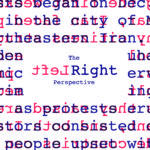While the American Dream might not be dead, it has certainly become exclusive. In recent years, income inequality in the U.S. reached record levels. Consequently, the U.S. economy has suffocated the bottom half of its population, leaving many on their last leg and gasping for breath. There is no way to sugarcoat it — living paycheck to paycheck is the drab reality for tens of millions of Americans.
It has never been easy to be poor in America, and a rapidly growing number of people living under a Trump-era economy are just trying to make ends meet. The reality is, Americans are working arduous full-time jobs, yet are not earning enough to gain stable economic footing.
The bottom line is that the COVID-19 crisis and the ensuing economic collapse will be the straw that breaks the camel’s back for millions of Americans and their families.
According to the Brookings Institution, almost half of U.S. workers ages 18 to 64 are employed in low-wage jobs. And workers certainly are not timid about sharing their discomfort, with about six out of 10 workers saying their jobs are mediocre to downright bad, according to a 2019 Gallup job-quality survey.
The U.S. living wage far exceeds the poverty threshold. What does this mean? As reported in the Brookings study, it means that a family of four (two working adults, two children) needs to work nearly two full-time minimum wage jobs each (a 77-hour work week per working adult) to earn a living wage. It means a single parent with two children needs to work the equivalent of three and one half full-time jobs (139 hours per work week), more hours than there are in five days, to earn the living wage on a minimum wage income.
Throw on top of those already sobering statistics the world’s priciest childcare and education system, healthcare costs nearly double that of nations with comparable collective incomes, and the standard excesses of paying rent, making loan payments and putting food on the table — the picture starts to become abundantly dire and clear.
The Labor Department reported in two weeks’ time 10 million Americans, primarily in blue-collar and service sectors, applied for jobless benefits, and the worst is yet to come. The Federal Reserve Bank of St. Louis forecasts 47 million Americans could lose their jobs because of the novel coronavirus. These numbers are incomprehensible, a level not seen since the Great Depression.
Desperate times call for desperate measures. Congress passed the Coronavirus Aid, Relief, and Economic Security (CARES) Act and President Trump signed it into law March 27. While the intricacies of this massive $2.2 trillion legislation are largely up for debate, one thing is incontrovertible — the American people need help now, and the CARES Act has expeditiously sought to provide that help.
The CARES Act will provide a one-time $1,200 payment to adults making as much as $75,000, and $2,400 payments to married couples making less than $150,000 combined. Parents will also receive $500 for each dependent child.
Americans, seemingly overnight, have woken up in a daunting, new world. For millions, part of this reality is being in absolute freefall, frantically grasping at any financial help they can find. Part of this reality is worrying about the surreal possibility of losing their home. Part of this reality is not knowing if they can put food on the table for their family. Part of this reality is the existential fear of contracting COVID-19 and not having health insurance.
The COVID-19 crisis has created a profound and uncanny sense of disorientation. For the foreseeable future, this is the new reality. Hopefully, the CARES Act will be enough to keep the American people afloat. If not, Congress and the current administration should try everything in their power to ensure the American people do not have to suffer more than they already have during this crisis.





